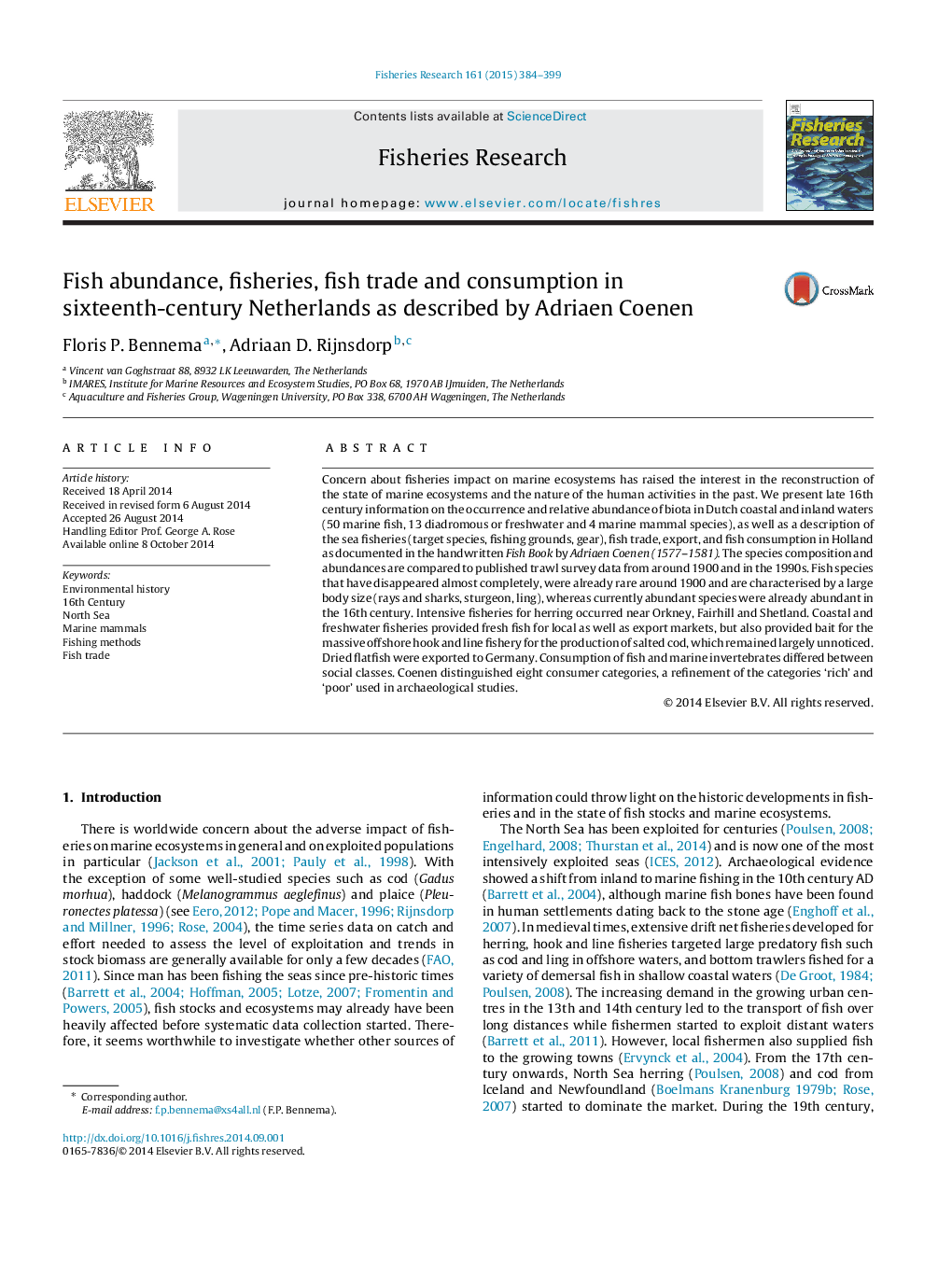| کد مقاله | کد نشریه | سال انتشار | مقاله انگلیسی | نسخه تمام متن |
|---|---|---|---|---|
| 6385859 | 1626807 | 2015 | 16 صفحه PDF | دانلود رایگان |

- 16th Century information is disclosed and compared to the literature.
- Relative abundance of fish and marine mammals along the Dutch coast is described.
- Several species common in the 16th century were absent or rare in the 20th century.
- Abundant species in the 20th century were already abundant in the 16th century.
- 16th century fisheries, gears, trade and consumer preferences are described.
Concern about fisheries impact on marine ecosystems has raised the interest in the reconstruction of the state of marine ecosystems and the nature of the human activities in the past. We present late 16th century information on the occurrence and relative abundance of biota in Dutch coastal and inland waters (50 marine fish, 13 diadromous or freshwater and 4 marine mammal species), as well as a description of the sea fisheries (target species, fishing grounds, gear), fish trade, export, and fish consumption in Holland as documented in the handwritten Fish Book by Adriaen Coenen (1577-1581). The species composition and abundances are compared to published trawl survey data from around 1900 and in the 1990s. Fish species that have disappeared almost completely, were already rare around 1900 and are characterised by a large body size (rays and sharks, sturgeon, ling), whereas currently abundant species were already abundant in the 16th century. Intensive fisheries for herring occurred near Orkney, Fairhill and Shetland. Coastal and freshwater fisheries provided fresh fish for local as well as export markets, but also provided bait for the massive offshore hook and line fishery for the production of salted cod, which remained largely unnoticed. Dried flatfish were exported to Germany. Consumption of fish and marine invertebrates differed between social classes. Coenen distinguished eight consumer categories, a refinement of the categories 'rich' and 'poor' used in archaeological studies.
Journal: Fisheries Research - Volume 161, January 2015, Pages 384-399